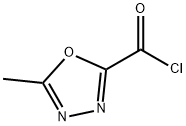Product Features
Merck's Raltegravir is the first HIV integrase strand transfer inhibitor (referred to as an integrase inhibitor). It is also known as MK-0518, which can treat human immunodeficiency virus (HIV)-1 infection combining with other antiretroviral (ARV) drugs. It slows HIV-1 infection by inhibiting the necessary HIV integrase for viral replication. When raltegravir combines with other anti-HIV drugs, it can reduce the amount of HIV in the blood, while it can increase the number of so-called CD4+ T cells that belong to white blood cells. It helps against other infections. The interaction between raltegravir and ritonavir, efavirenz, tipranavir and tenofovir indicates that there is no drug cross-resistance, and there is a synergistic effect with a variety of drugs. The most common adverse reactions are diarrhea, nausea, headache. In addition, blood tests show that the muscle enzymes abnormally increased in some of patients who taked this drug.
The above information is edited by the chemicalbook of Kui Ming.
Description
Joining maraviroc as a unique approach to battling HIV-1, raltegravir, an
inhibitor of HIV-1 integrase, represents the first in its class to be developed and
launched as a combination treatment with other antiretroviral agents (NRTIs,
NNRTIs, and PIs). HIV-1 integrase is essential for replication of the virus as a
virally encoded enzyme that integrates the viral DNA into the genome of the host
cell. Inhibition of HIV-1 integrase prevents the two-step process of endonucleolytic
removal of the terminal dinucleotide from each 3′end of the viral DNA
followed by the covalent integration of the viral DNA, at these modified 3′ends,
into the host DNA, thereby representing a viable intervention in the viral life
cycle. In vitro, raltegravir inhibited the strand transfer activity of HIV-1 integrase
with an IC
50 of 2–7nM with > 1,000-fold selectivity over other phosphoryltransferases.
In addition, its in vitro IC
95 for HIV-1 in 10% fetal bovine serum and
50% human serum was 19 and 33 nM, respectively. Raltegravir was well tolerated with no dose-related toxicities and a safety profile comparable to placebo. The most common clinical adverse events were diarrhea, nausea, vomiting, fatigue, headache, flushing, pruritus, and injection-site reactions.
Uses
Raltegravir (MK-0518) is a potent integrase (IN) inhibitor for WT and S217Q PFV IN.
Uses
Raltegravir (MK-0518, Isentress) is a potent integrase (IN) inhibitor for WT and S217Q PFV IN with IC50 of 90 nM and 40 nM, respectively.
Definition
ChEBI: Raltegravir is a pyrimidone that is pyrimidin-4(3H)-one in which the hydrogens at positions 2, 3, 5 and 6 are replaced by 2-[(5-methyl-1,3,4-oxadiazole-2-carbonyl)amino]propan-2-yl, methyl, hydroxy, and N-[(4-fluorophenyl)methyl]aminoacyl groups, respectively. It is an antiretroviral drug used for treatment of HIV infection. It has a role as an antiviral drug and a HIV-1 integrase inhibitor. It is a 1,2,4-oxadiazole, a dicarboxylic acid amide, a member of monofluorobenzenes, a pyrimidone, a hydroxypyrimidine and a secondary carboxamide.
Acquired resistance
Several characteristic mutations leading to typical amino
acid exchanges have been characterized in cell culture studies
and confirmed in clinical trial participants with virological
failure while receiving raltegravir in combination with
other antiretrovirals. Virological failure has generally been
associated with mutations at one of three residues – Y143,
Q148 or N155 – usually in combination with at least one
other mutation.
Pharmaceutical Applications
Formulated as the potassium salt for oral administration.
Pharmacokinetics
Oral absorption: Not known/available
C
max 400 mg twice daily: c. 2.17 mg/L
Plasma half-life: c. 9 h
Volume of distribution: Not known/available
Plasma protein binding: c. 83%
Absorption and distribution
It may be administered without regard to food. There are few data regarding its capacity to penetrate into genital secretions or breast milk. A study of 25 HIV-infected individuals receiving raltegravir as a component of combination antiretroviral therapy found that 24 had detectable levels and that 50% of these reached a level exceeding the 95% inhibitory concentration reported to inhibit HIV-1 strains fully susceptible to integrase inhibition.
Metabolism and excretion
It is not a substrate, and does not appear to inhibit or induce the cytochrome P
450 enzyme complex. It is primarily metabolized through hepatic glucuronidation mediated by the UGT-1A1 enzyme. It is excreted in the feces (51%) and the urine (32%) as unaltered compound and its glucuronide. There are no recommended dose adjustments for weight, sex and race, or for hepatic or renal insufficiency. The pharmacokinetic handling in children has not been determined.
Clinical Use
Treatment of HIV infection (in combination with other antiretroviral drugs)
Side effects
Its toxicity profile to date is remarkably benign. Clinical trial
participants experienced similar types and frequencies of
adverse events as those receiving placebo. The most frequently
reported adverse events were nausea, diarrhea and headache
and were mostly mild to moderate in intensity. Myopathy,
rhabdomyolysis and elevations of creatinine phosphokinase
have been noted in a few trial participants and it should be
used cautiously in combination with drugs associated with
muscle toxicity.
Synthesis
The synthesis of raltegravir begins with the treatment of acetone cyanohydrin with liquid ammonia in a pressure vessel. The resulting aminonitrile is protected as the benzyl carbamate before reaction of the nitrile moiety with hydroxylamine to afford the amidoxime. The pyrimidone ring is then constructed by condensation with dimethyl acetylenedicarboxylate and subsequent cyclization in hot xylene. Methylation of the pyrimidone is performed next with iodomethane and magnesium methoxide in dimethylsulfoxide followed by conversion of the methyl ester to an amide with 4-fluorobenzylamine. The amine, liberated from hydrogenolytic removal of the carbobenzyloxy-protecting group, is acylated with oxadiazolecarbonyl chloride, prepared in three steps from 5-methyltetrazole, to afford raltegravir.
Drug interactions
Potentially hazardous interactions with other drugs
Antibacterials: concentration reduced by rifampicin,
consider increasing raltegravir dose.
Antivirals: avoid with fosamprenavir.
Orlistat: absorption of raltegravir possibly reduced.
Ulcer-healing drugs: concentration increased by
omeprazole and famotidine.
Metabolism
Metabolised via glucuronidation, catalysed by the enzyme
uridine diphosphate glucuronosyltransferase.
Raltegravir is excreted in both urine and faeces as
unchanged drug and metabolites.





